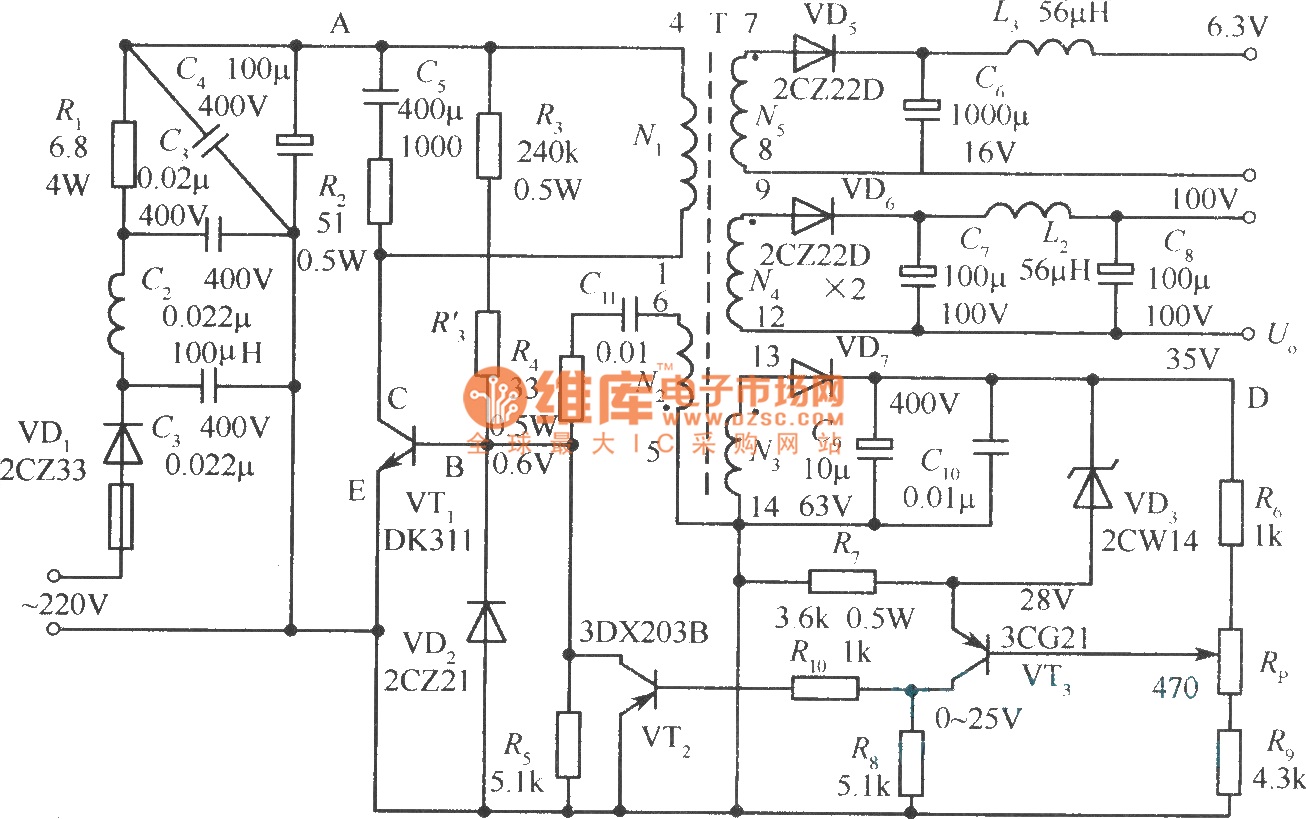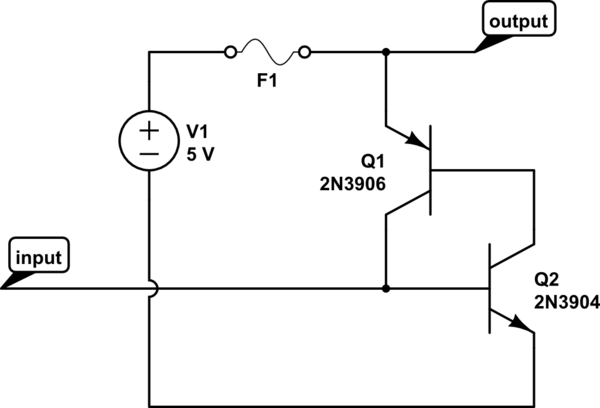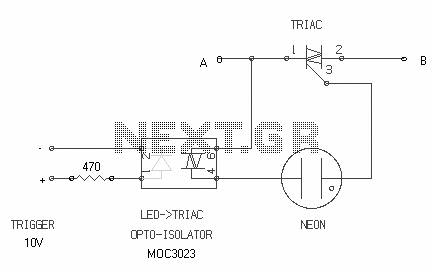
Power audio amplifier schematics with Tda2005
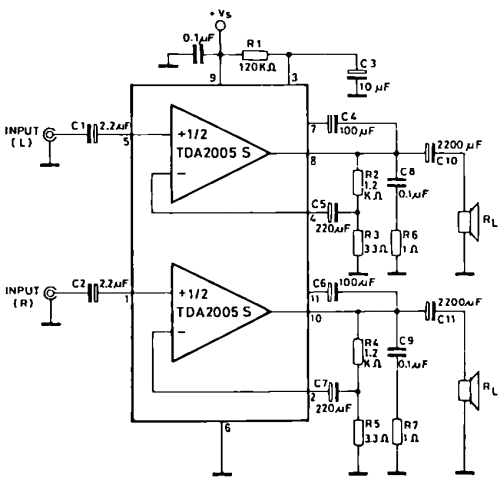
The TDA2005 integrated circuit (IC) features a high output power of 10W per channel (stereo) at a load of 2 ohms with a distortion of 10%, and 20W in bridge mode at a load of 4 ohms with a distortion of 1% when supplied with 14.4V. This IC is designed for high reliability, incorporating various protection mechanisms against output DC and AC short circuits to ground, excessive chip temperature, load dump voltage surges, accidental open ground conditions, and very inductive loads. The TDA2005 can be utilized in bridge (TDA2005M) or stereo (TDA2005S) amplifier configurations, with or without bootstrap capacitors, and features easily programmable gain and bandwidth settings. The circuit requires very few external components and has a straightforward mounting system that does not necessitate electrical isolation between the package and the heatsink.
The TDA2005 IC is a versatile amplifier solution suitable for various audio applications, particularly in automotive and consumer electronics. Its ability to deliver significant output power makes it ideal for driving speakers in compact systems. The integrated protection features ensure that the amplifier can withstand various adverse conditions, enhancing its durability and reliability in real-world applications.
In bridge mode, the TDA2005M variant can achieve higher power output, making it suitable for applications where space is limited but power requirements are high. The stereo mode (TDA2005S) allows for a more traditional setup, providing a balanced audio output for two-channel systems. The programmable gain feature enables customization for different audio sources and environments, allowing for optimal performance based on user needs.
The simplicity of the external component requirements minimizes design complexity and assembly time, making the TDA2005 an attractive choice for engineers and hobbyists alike. Its straightforward mounting process facilitates integration into various designs without the need for complex thermal management solutions, as the lack of electrical isolation simplifies the heatsinking process. This characteristic is particularly beneficial in compact designs where space and weight are critical considerations.
Overall, the TDA2005 IC represents a robust and efficient solution for audio amplification, combining high performance with ease of use and integration. Its design reflects a thoughtful approach to both functionality and reliability, making it a valuable component in modern audio systems.The Tda2005 IC has a high output power: PO=10W+10W @ RL=2ohm, d=10% (stereo) and PO=20W @ RL=4ohm, d=1% (bridge) for Vs=14. 4V. The high reliability of the IC comes from the various protections against: output DC and AC short circuit to ground, overrating chip temperature, load dump voltage surge, fortuitous open ground and very inductive loads.
Th e IC can be used used in bridge (TDA2005M) or stereo (TDA2005S) amplifiers - with or without boostrap - with easily programmable gain and bandwidth. The Tda2005 needs a very low number of external components, and has a very simple mounting system with no electrical isolation between the package and heatsink.
🔗 External reference
The TDA2005 IC is a versatile amplifier solution suitable for various audio applications, particularly in automotive and consumer electronics. Its ability to deliver significant output power makes it ideal for driving speakers in compact systems. The integrated protection features ensure that the amplifier can withstand various adverse conditions, enhancing its durability and reliability in real-world applications.
In bridge mode, the TDA2005M variant can achieve higher power output, making it suitable for applications where space is limited but power requirements are high. The stereo mode (TDA2005S) allows for a more traditional setup, providing a balanced audio output for two-channel systems. The programmable gain feature enables customization for different audio sources and environments, allowing for optimal performance based on user needs.
The simplicity of the external component requirements minimizes design complexity and assembly time, making the TDA2005 an attractive choice for engineers and hobbyists alike. Its straightforward mounting process facilitates integration into various designs without the need for complex thermal management solutions, as the lack of electrical isolation simplifies the heatsinking process. This characteristic is particularly beneficial in compact designs where space and weight are critical considerations.
Overall, the TDA2005 IC represents a robust and efficient solution for audio amplification, combining high performance with ease of use and integration. Its design reflects a thoughtful approach to both functionality and reliability, making it a valuable component in modern audio systems.The Tda2005 IC has a high output power: PO=10W+10W @ RL=2ohm, d=10% (stereo) and PO=20W @ RL=4ohm, d=1% (bridge) for Vs=14. 4V. The high reliability of the IC comes from the various protections against: output DC and AC short circuit to ground, overrating chip temperature, load dump voltage surge, fortuitous open ground and very inductive loads.
Th e IC can be used used in bridge (TDA2005M) or stereo (TDA2005S) amplifiers - with or without boostrap - with easily programmable gain and bandwidth. The Tda2005 needs a very low number of external components, and has a very simple mounting system with no electrical isolation between the package and heatsink.
🔗 External reference
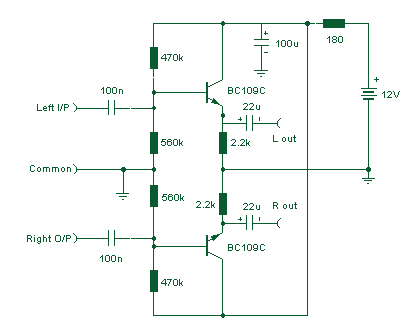
.jpg)
